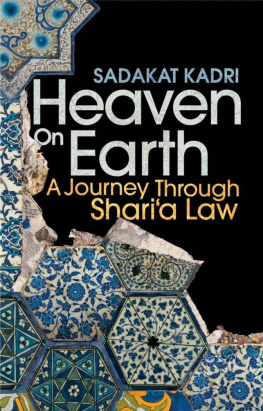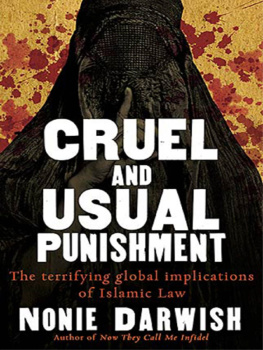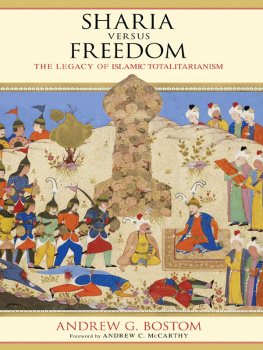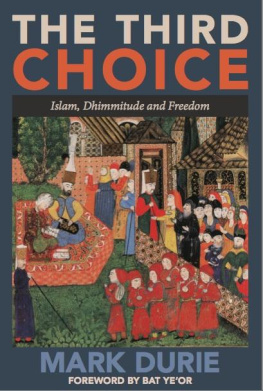Sadakat Kadri - Heaven on Earth: A Journey Through Sharia Law from the Deserts of Ancient Arabia to the Streets of the Modern Muslim World
Here you can read online Sadakat Kadri - Heaven on Earth: A Journey Through Sharia Law from the Deserts of Ancient Arabia to the Streets of the Modern Muslim World full text of the book (entire story) in english for free. Download pdf and epub, get meaning, cover and reviews about this ebook. year: 2012, publisher: Farrar, Straus and Giroux, genre: Religion. Description of the work, (preface) as well as reviews are available. Best literature library LitArk.com created for fans of good reading and offers a wide selection of genres:
Romance novel
Science fiction
Adventure
Detective
Science
History
Home and family
Prose
Art
Politics
Computer
Non-fiction
Religion
Business
Children
Humor
Choose a favorite category and find really read worthwhile books. Enjoy immersion in the world of imagination, feel the emotions of the characters or learn something new for yourself, make an fascinating discovery.
- Book:Heaven on Earth: A Journey Through Sharia Law from the Deserts of Ancient Arabia to the Streets of the Modern Muslim World
- Author:
- Publisher:Farrar, Straus and Giroux
- Genre:
- Year:2012
- Rating:4 / 5
- Favourites:Add to favourites
- Your mark:
Heaven on Earth: A Journey Through Sharia Law from the Deserts of Ancient Arabia to the Streets of the Modern Muslim World: summary, description and annotation
We offer to read an annotation, description, summary or preface (depends on what the author of the book "Heaven on Earth: A Journey Through Sharia Law from the Deserts of Ancient Arabia to the Streets of the Modern Muslim World" wrote himself). If you haven't found the necessary information about the book — write in the comments, we will try to find it.
Some fourteen hundred years after the Prophet Muhammad first articulated Gods law-the sharia-its earthly interpreters are still arguing about what it means. Hard-liners reduce it to amputations, veiling, holy war, and stonings. Others say that it is humanitys only guarantee of a just society. And as colossal acts of terrorism made the word sharia more controversial than ever during the past decade, the legal historian and human rights lawyer Sadakat Kadri realized that many people in the West harbored ideas about Islamic law that were hazy or simply wrong. Heaven on Earth describes his journey, through ancient texts and across modern borders, in search of the facts behind the myths.
Kadri brings lucid analysis and enlivening wit to the turbulent story of Islams foundation and expansion, showing how the Prophet Muhammads teachings evolved gradually into concepts of justice. Traveling the Muslim world to see the sharias principles in action, he encounters a cacophony of legal claims. At the ancient Indian grave of his Sufi ancestor, unruly jinns are exorcised in the name of the sharia. In Pakistans madrasas, stern scholars ridicule his talk of human rights and demand explanations for NATO drone attacks in Afghanistan. In Iran, he hears that God is forgiving enough to subsidize sex-change operations-but requires the execution of Muslims who change religion. Yet the stories of compulsion and violence are only part of a picture that also emphasizes compassion and equity. Many of Islams first judges refused even to rule on cases for fear that a mistake would damn them, and scholars from Delhi to Cairo maintain that governments have no business enforcing faith.
The sharia continues to shape explosive political events and the daily lives of more than a billion Muslims. Heaven on Earth is a brilliantly iconoclastic tour through one of humanitys great collective intellectual achievements-and an essential guide to one of the most disputed but least understood controversies of modern times.
Sadakat Kadri: author's other books
Who wrote Heaven on Earth: A Journey Through Sharia Law from the Deserts of Ancient Arabia to the Streets of the Modern Muslim World? Find out the surname, the name of the author of the book and a list of all author's works by series.










![Sadakat Kadri [Sadakat Kadri] - THE TRIAL: A History from Socrates to O. J. Simpson](/uploads/posts/book/57415/thumbs/sadakat-kadri-sadakat-kadri-the-trial-a.jpg)

